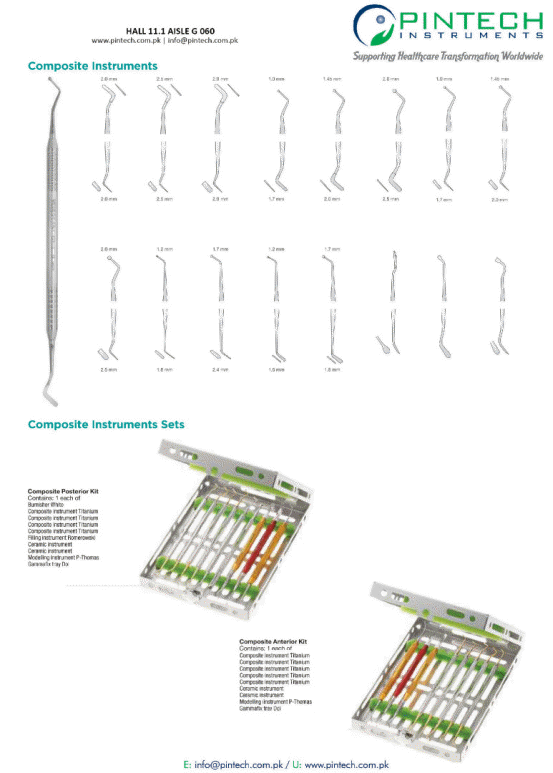Advertisement

Dental composite instruments are specialized tools used in restorative dentistry to place, sculpt, and contour composite resin materials. These instruments are designed to prevent the composite from sticking, ensuring smooth application and precise shaping for natural-looking restorations.
Common types of dental composite instruments:
Placement Instruments: These instruments are used to carry and place composite material into the prepared cavity. They come in various shapes and sizes, including spatulas, paddles, and pluggers.
Condensing Instruments: These instruments help pack and condense the composite material into the cavity, ensuring proper adaptation and reducing voids.
Sculpting Instruments: These instruments are used to shape and contour the composite material to match the natural anatomy of the tooth. They include carvers, burnishers, and contouring instruments.
Finishing Instruments: These instruments are used to refine the surface of the composite restoration, removing any excess material and creating a smooth, polished finish.
Non-stick Instruments: These instruments are coated with a non-stick material, such as titanium nitride or Teflon, to prevent the composite from adhering to the instrument. This makes it easier to manipulate the material and achieve a smooth, even finish.
Common types of dental composite instruments:
Placement Instruments: These instruments are used to carry and place composite material into the prepared cavity. They come in various shapes and sizes, including spatulas, paddles, and pluggers.
Condensing Instruments: These instruments help pack and condense the composite material into the cavity, ensuring proper adaptation and reducing voids.
Sculpting Instruments: These instruments are used to shape and contour the composite material to match the natural anatomy of the tooth. They include carvers, burnishers, and contouring instruments.
Finishing Instruments: These instruments are used to refine the surface of the composite restoration, removing any excess material and creating a smooth, polished finish.
Non-stick Instruments: These instruments are coated with a non-stick material, such as titanium nitride or Teflon, to prevent the composite from adhering to the instrument. This makes it easier to manipulate the material and achieve a smooth, even finish.

291 Mohallah East Bhopalwala
51030 Sambrial
Pakistan
51030 Sambrial
Pakistan
more information
Hall 11.1 | G060

